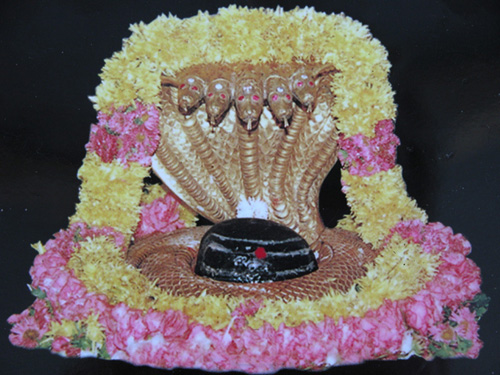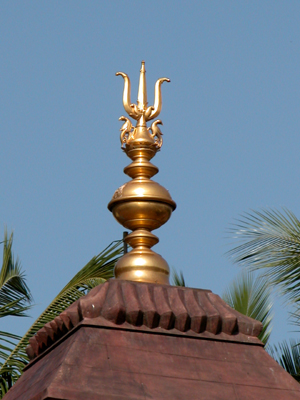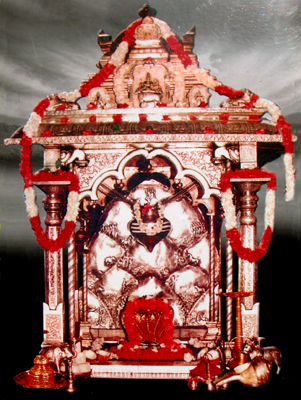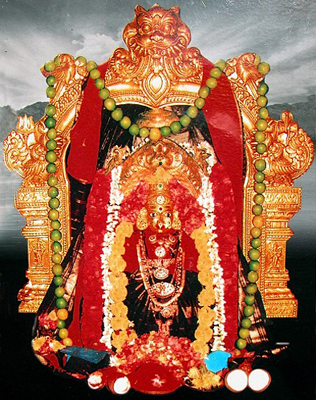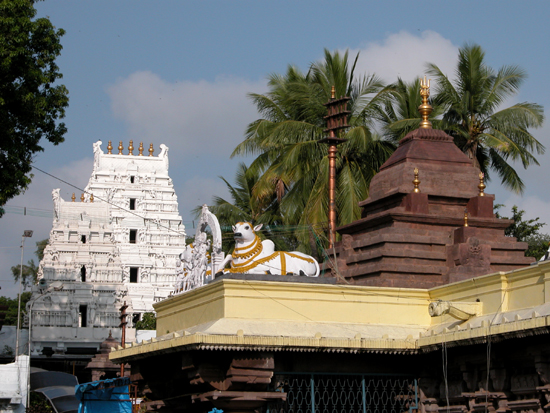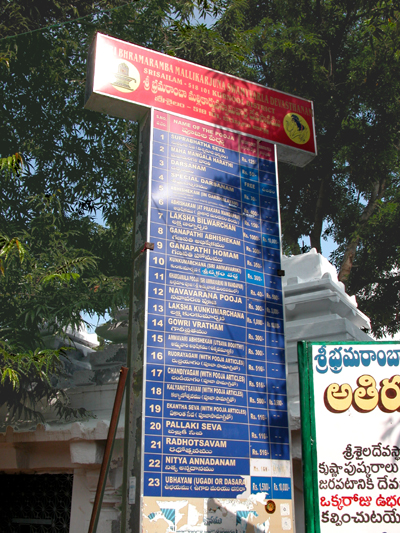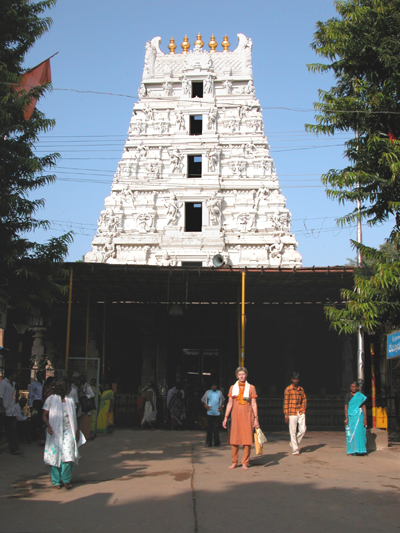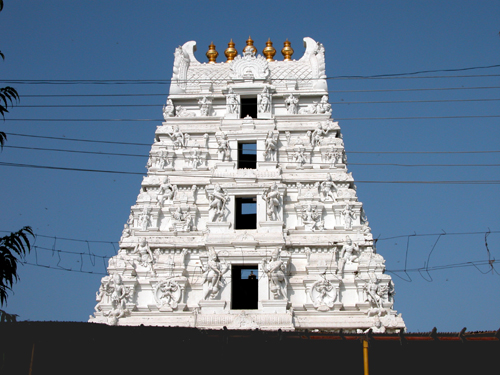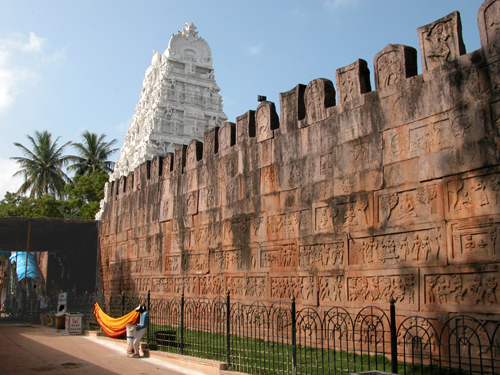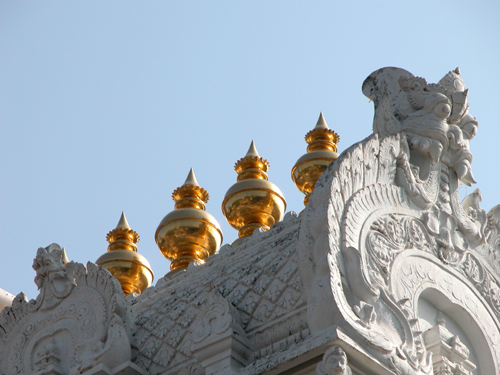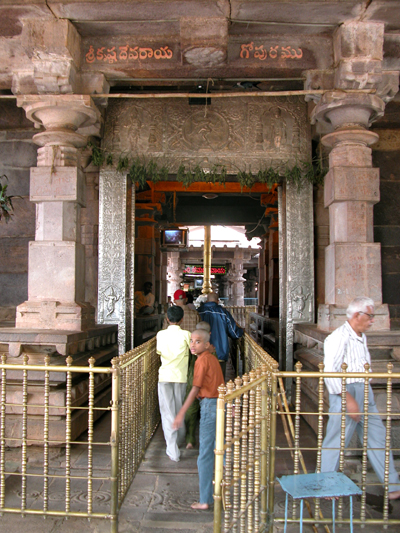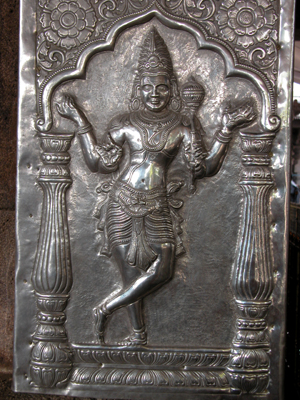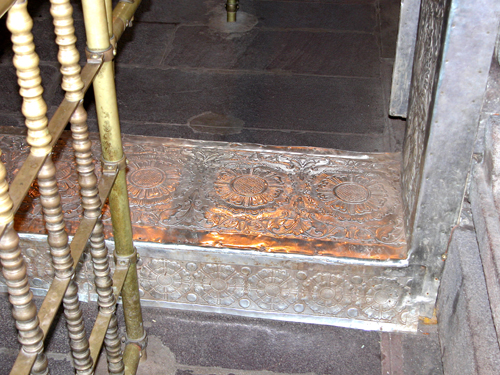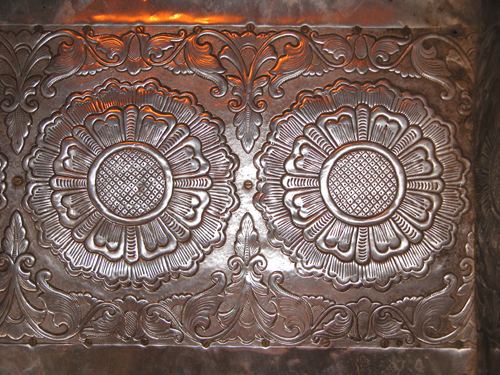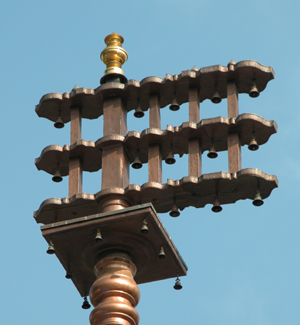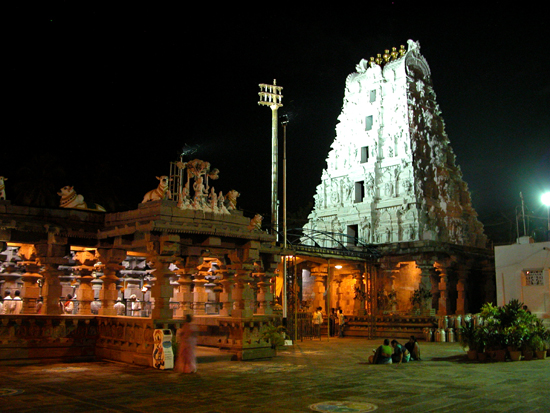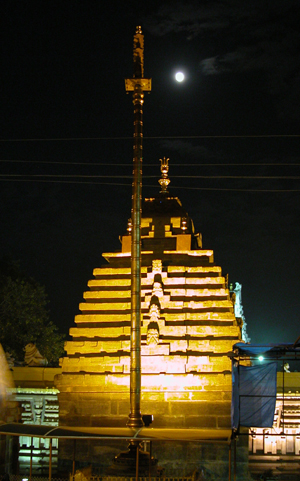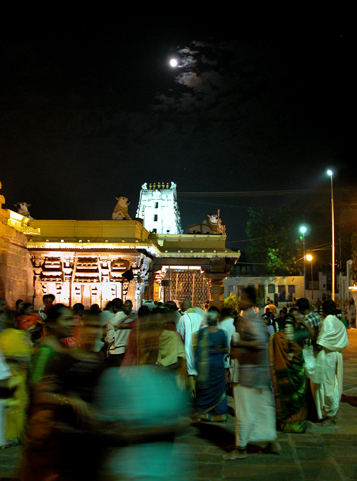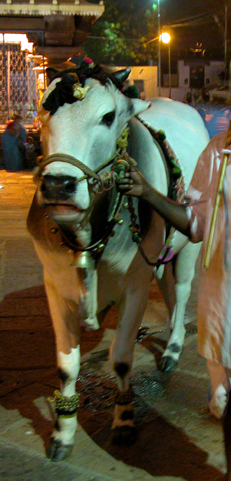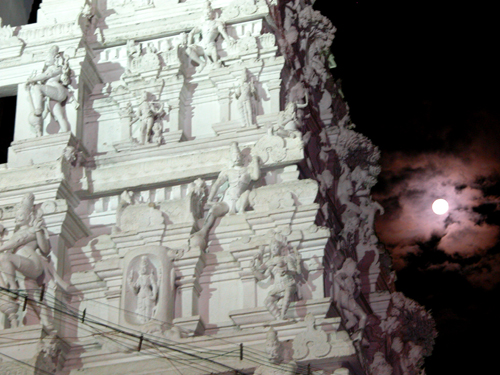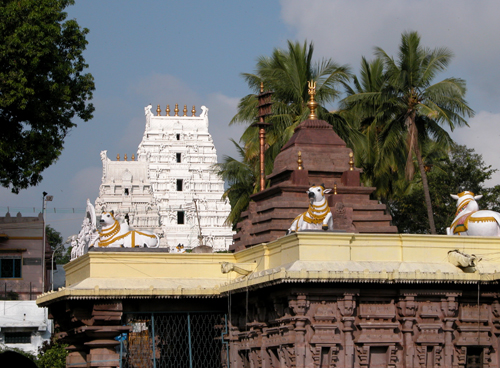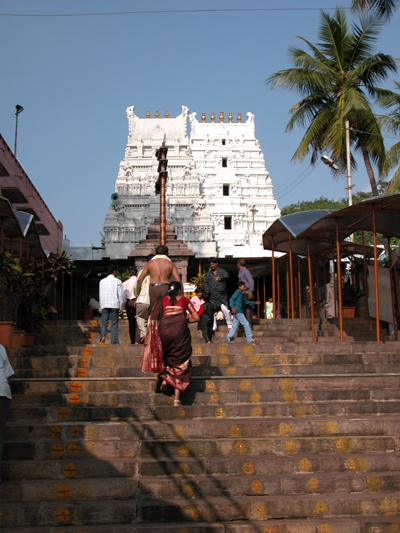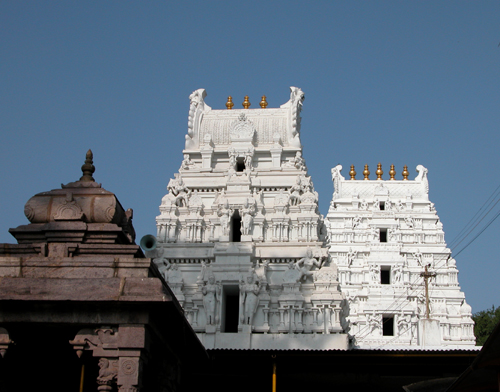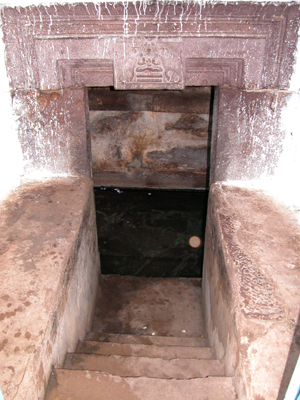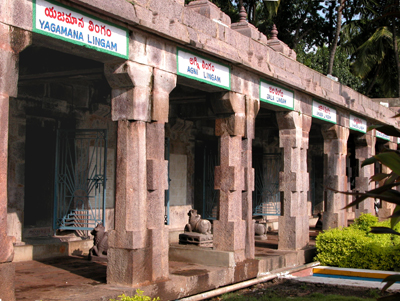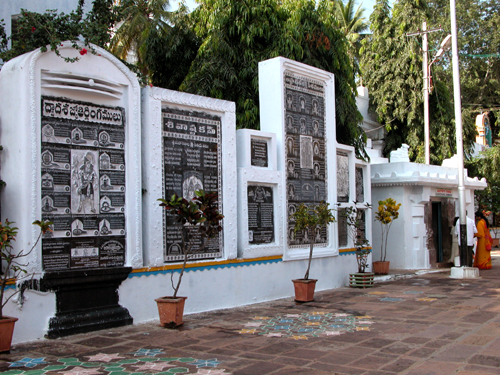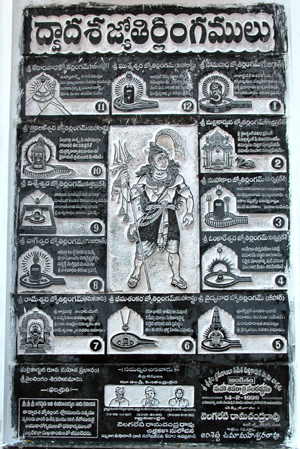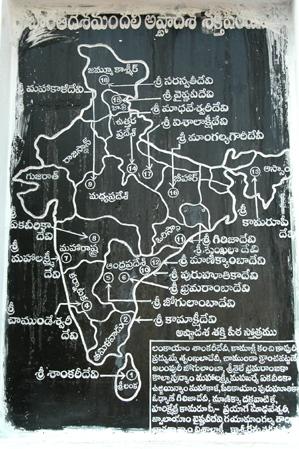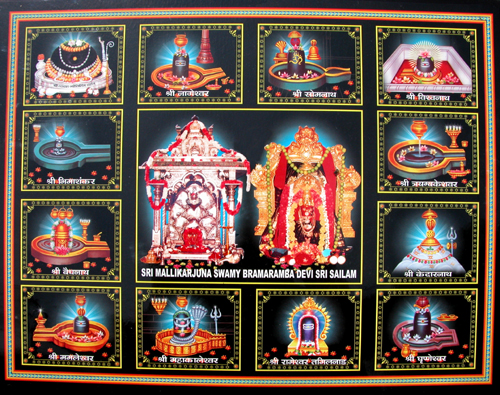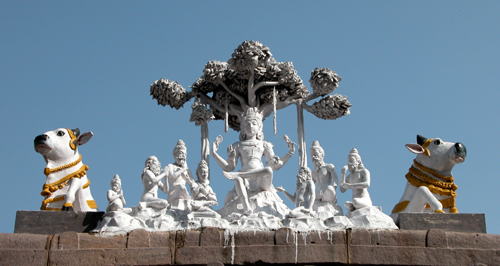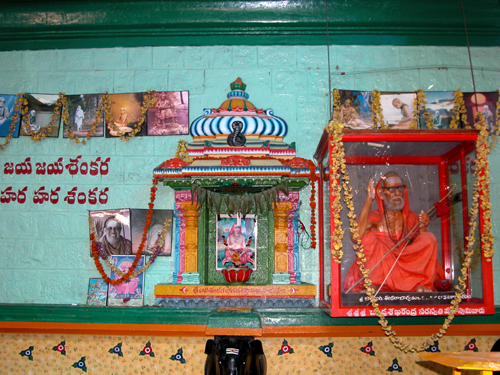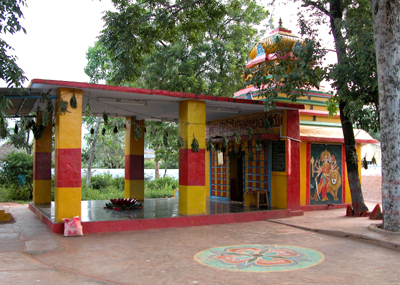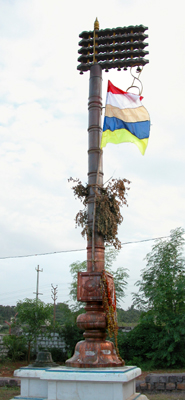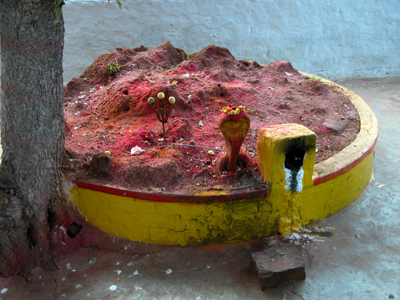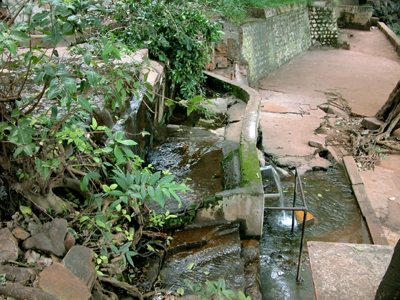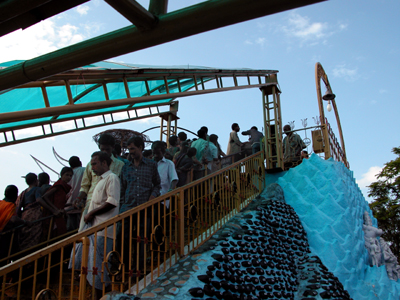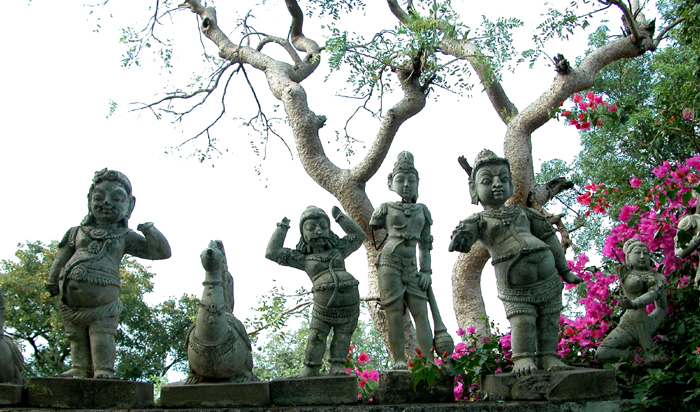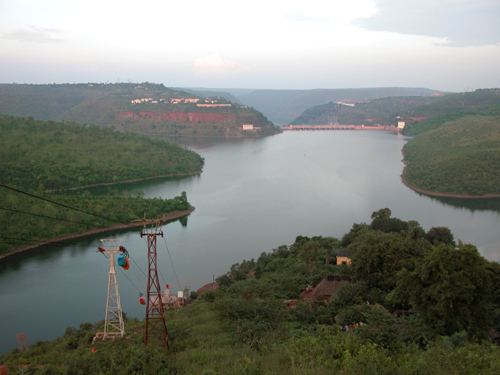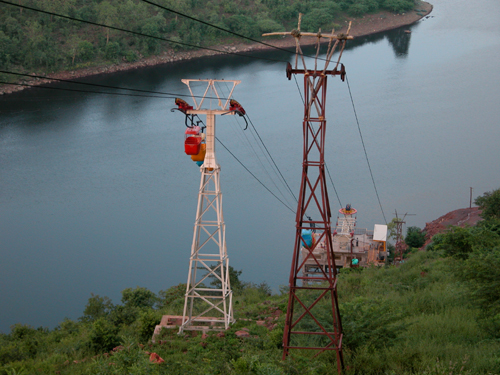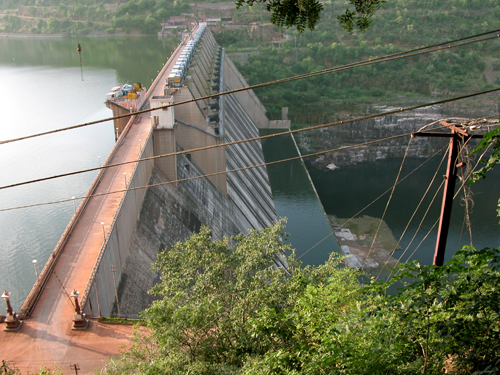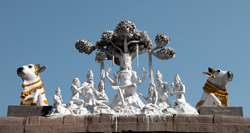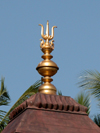 |
The Mallikarjuna Jyotir Lingam
Temple, |
|
|
|
|
|
|
Sri Sailam |
|
Sri Sailam is populary known as “The Kailash of the south” and it is one of the most ancient and sacred places in South India, situated on the banks of the holy River Krishna.
Situated
At times the area is disturbed due to political activists and can be very difficult to get permission to visit. Sri Sailam is one of the three “Shiva-Shakti Peetahs” in India, with the temples of the Mallikarjuna Jyotir Linga and the Goddess Bhramaramba. The other Shiva-Shakti Peethas are the Vishwanatha Temple in Kasi or Varanasi (Uttar Pradesh), and the Mahakaleswara Temple in Ujjain (Madhya Pradesh). Scholars have stated in epichs of India that three holy places offer instant salvation. They are Kasi, Arunachalam and Sri Sailam. Shiva and Parvati appered here as “Arjuna” and “Mallika”, hence the name “Mallikarjuna”. The mount is famous as “Sri Sailam” meaning “The Esteemed Mount” Sri Sailam has been prevailing from the times of the Vedas even before the Arya and Dravidian culture. In the 32nd chapter of the Srikhanda article in the Scanda Purana, Veda Vyasa asks Sanat Kumara to explain about Sri Sailam. Sri Sailam is mentioned in several other texts and Puranas and is also called “Sri Giri”, “Sri Parvata”, “Sri Nagara”, “Rudra Parvata” and “Seshachalam”. Sri Sailam city has grown around the Temple area. There are several possiblities for lodging near the temple, especially out of the big festival times as Maha Shivaratri (Feb/March) or Shrawan Poornima. All life in the city evolves around the famous temple and Vedic chanting from the morning and evening rituals is heard all over the city. The rest of the day “Om Namah Shivaya” is transmitted, to awaken the spirit and tune the minds towards God.
How
to get there |
|
|
|
|
The Mallikarjuna Temple |
|
|
|
The Mallikarjuna temple is situated at the top of the 456 m high Rishabhagiri Hill (Rishab = bull) on the southern bank of the river Krishna in the midst of the Nallamallai Forest. About two miles down the hill flows the ancient river River Krishna. Since it runs underground during parts of its journey, it is known as “Paatala Ganga”. The presiding deities of Sri Sailam is Lord Sri Mallikarjunaswamy and Goddess Sri Bhramaramba Devi. |
|
Mallika = A kind of Jasmine |
|
It is believed that a princess fell in love with a deity at mount Sri Saila and
offered him a garland of Mallika every day; Jasmine symbolizes perfection and purity. |
|
The temple |
|
The temple is constructed in the traditional Dravidian style and it was famous even in the 1st century. The origin of Sri Sailam is obscure and the present Mallikarjuna Temple, originally circa second century AD, dates back to 14th century. It has often been attacked and damaged because of its richness and political importance..
The temple abounds in sculptural beauty and there are about 116 inscriptions in
and around it.
This sthalam, along with Thiruppudaimarudur near Ambasamudram and
Thiruvidaimarudur is considered an Arjuna Ksetram. |
|
Other shrines in the tempel compound |
|
Behind or to
the North of the shrine is a seperate temple of Parvati, known as the Temple of
Mallika Devi. Near about are the famous pilgrimcenters of Ambaji, the Vilvavana
and the Mahanadi. There is also a Shakti Peetha of the Goddess Bhramaramba,
the consort of Lord
Mallikarjunaswami, in the
form of Goddess Kali.
Ambal's Sannadhi is to the west of Iswaran Sannadhi. Other shrines within the temple include the “Sahasra Linga”, “Panchapandava Temples” and “Vata Vriksha”. |
